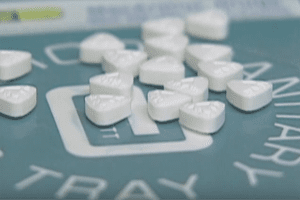
Precautions for Bisphosphonate Drugs There are more concerns today that Fosamax, Actonel, Boniva, and Reclast, a class of drugs known as oral bisphosphonates that are used to prevent and treat osteoporosis in post-menopausal women, could be causing a specific type of femur fracture in some patients. Yesterday, the Food & Drug Administration (FDA) said it […]

Precautions for Bisphosphonate Drugs There are more concerns today that Fosamax, Actonel, Boniva, and Reclast, a class of drugs known as oral bisphosphonates that are used to prevent and treat osteoporosis in post-menopausal women, could be causing a specific type of femur fracture in some patients. Yesterday, the Food & Drug Administration (FDA) said it would be taking a look at the issue.
According to a notice posted on the FDA’s Web site, in June 2008 the agency requested information from all bisphosphonate drug manufacturers regarding the potential for atypical femur fractures. According to the FDA, a review of available data did not show an increase in this risk in women using these medications.
This latest FDA review was prompted by media reports linking Fosamax and the other drugs to atypical subtrochanteric femur fractures in some patients who’ve been on the drugs for several years. Such fractures occur in the bone just below the hip joint and can be extremely painful.
In announcing this safety review, the FDA said it would work closely with outside experts, including members of the recently convened American Society of Bone and Mineral Research Subtrochanteric Femoral Fracture Task Force, to gather additional information that may provide more insight into this issue.
The FDA has advised that healthcare professionals continue to follow the recommendations in the drug label when prescribing oral bisphosphonates. Patients should not stop taking their medication unless told to do so by their healthcare professional. Patients should talk to their healthcare professional about any concerns they have with these medications, the agency said.
According to a report in The Wall Street Journal, two studies presented this week at the American Academy of Orthopaedic Surgeons’ annual meeting suggest the drugs might adversely affect bone quality and increase risk of atypical fractures of the femur when used for four or more years. One study by researchers at Columbia University compared the bone structure of 61 postmenopausal women with osteoporosis who had been taking bisphosphonates for a minimum of four year to 50 similar patients taking calcium and vitamin D supplements. While patients using bisphosphonates did experience improvement early on, the researchers found that “after four years of use, these trends reversed, revealing an association between prolonged therapy and declining cortical bone structural integrity.”
The second study, conducted by researchers at the Hospital for Special Surgery in New York, looked at bone samples taken from 21 post-menopausal women who were treated for femoral fractures. Of these, 12 patients had a history of bisphosphonate treatment for an average of 8.5 years, while nine women hadn’t been treated with the drugs. According to The Wall Street Journal, the study found that the subjects taking bisphosphonates had a reduction in bone tissue heterogeneity compared with women not receiving the drugs, which suggests there might have been a difference in bone quality parameters.
The personal injury attorneys at Parker Waichman LLP offer free, no-obligation case evaluations. For more information, fill out our online contact form or call 1-800-YOURLAWYER (1-800-968-7529).


